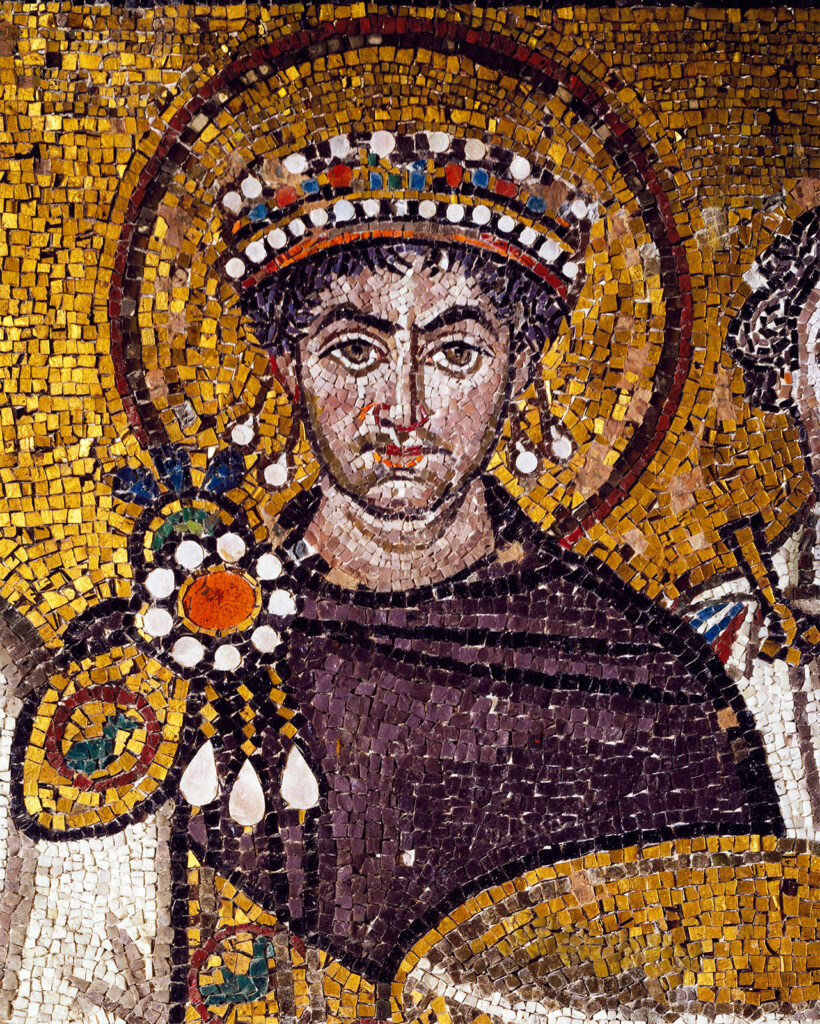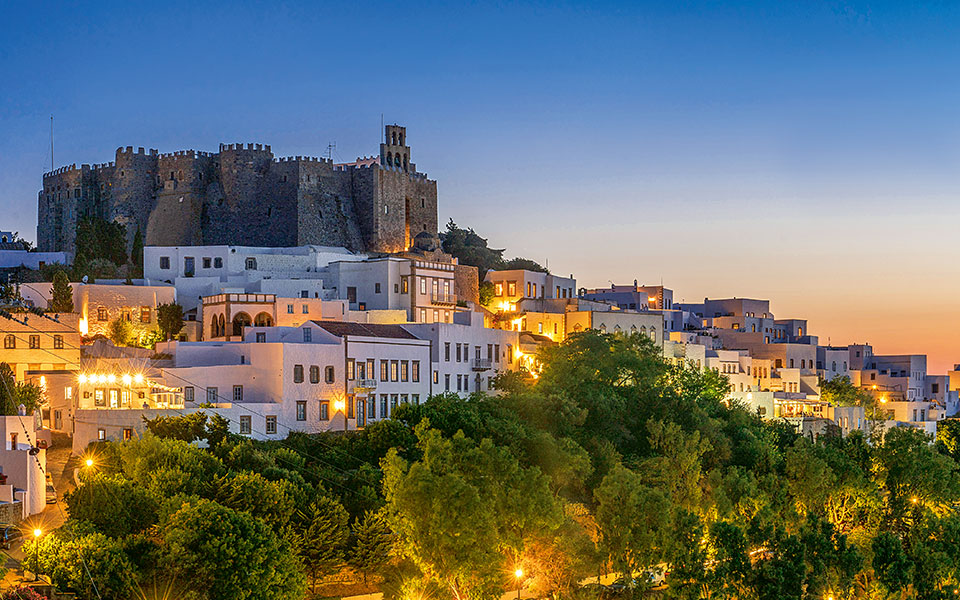ប៊ីហ្សង់ទិនដែលត្រូវបានគេស្គាល់ថាអាណាចក្រ រ៉ូមាំងខាងកើត (Eastern Roman Empire) បានកកើតនៅប្រមាណស.វ.ទី ៤ នៃគ.ស បន្ទាប់ពីអាណាចក្ររ៉ូមាំងត្រូវបានដួលរលំ។ នៅដើមស.វ.ទី ៤ អធិរាជរ៉ូមាំងមួយអង្គដែលមានឈ្មោះថា ខនស្តិនធិនណូប៉េលទី១ (Constantinople I)បានប្តូររាជធានីពីទីក្រុងរ៉ូម មកតំបន់ខាងកើតដែលជាអតីតតំបន់គ្រប់គ្រងដោយក្រិចបុរាណ ដោយតំបន់នោះមានឈ្មោះថា ប៊ីហ្សង់ទីម។
តំបន់ប៊ីហ្សង់ទីមស្ថិតនៅចន្លោះសមុទ្រពីរធំៗគឺ សមុទ្រមីឌីទ័ររ៉ាណេ និងសមុទ្រខ្មៅដែលមានរាជធានីឈ្មោះ ខនស្តិនធិនណូប៉េល (Constantinople) ក្រោយមកក្លាយជាអាណាចក្រប៊ីហ្សង់ទិន ហើយបច្ចុប្បន្នជាទីក្រុងអ៊ីស្តង់ប៊ុល (Istanbul) ជារាជធានីនៃប្រទេសទួគី។ ទឹកដីដែលធ្លាប់ស្ថិតក្នុងអាណាចក្រប៊ីហ្សង់ទីនមានដូចជា តំបន់ខ្លះនៅ អ៊ីតាលី ក្រិច និងតំបន់ បាលកាន់ (Balkan) ជាដើម។
សង្គមអរិយធម៌នៅក្នុងអាណាចក្រប៊ីហ្សង់ទីន ក៏មិនខុសអ្វីពីអាណាចក្ររ៉ូមាំងនោះទេ ពោលគឺពួកគេទទួលឥទ្ឋិពលពីអរិយធម៌រ៉ូមបុរាណ ទាំងការប្រើប្រាស់ប្រព័ន្ធនយោបាយ សាសនា(គ្រិស្ត) ភាសា(ក្រិច) អក្សរ(ឡាតាំង) ដូចគ្នាទៅនឹងអរិយធម៌រ៉ូមាំងដែរ គឺដូចនឹង ទីក្រុងរ៉ូមថ្មីមួយអញ្ចឹង។ នៅក្នុងប្រវត្តិសាស្រ្តនៃអាណាចក្រ ប៊ីហ្សង់ទីន ស្តេច ចាស្ទីនៀន ទី១ (Justinian I) ដែលចាត់ទុកជាស្តេចដ៌អស្ចារ្យ(The great King) បានពង្រីកវិសាលភាពទឹកដីកាន់តែធំធេង ពោលគឺគ្រប់គ្រងតំបន់បរិវេណសមុទ្រមេឌីទ័ររ៉ាណេ តំបន់ខ្លះនៃអេហ្ស៊ីប ស៊ីរី រ៉ូមខាងលិច (ទីក្រុងរ៉ូម) និងពែក្ស ជាដើម ហើយស្តេច ចាស្ទីនៀន ទី១ក៏បានកសាង Hagia Sophia ដែលជាព្រះវិហារដ៏ល្បីល្បាញមួយក្នុងទីក្រុងអ៊ីស្តង់ប៊ុល ដែលព្រះវិហារនេះកសាងនៅស.វ.ទី៦នៃគ.ស.។ នៅសម័យប៊ីហ្សង់ទិនព្រះវិហារ Hagia Sophia កសាងឡើងសម្រាប់ជាព្រះវិហារគ្រិស្តសាសនាអូស្សូដក់ (Orthodox) ប៉ុន្តែនៅឆ្នាំ ១៤៥៣ បន្ទាប់ពីអាណាចក្រអូតូម៉ង់គ្រប់គ្រងតំបន់នេះ ព្រះវិហារនេះក៏ក្លាយជាព្រះវិហារម៉ូស្លីមដ៏ល្បីល្បាញវិញ។
សំណង់ស្ថាបត្យកម្មប៊ីហ្សង់ទិន គឺជាការកសាងសំណង់ព្រះវិហារដែលរួមផ្សំជាមួយនឹងសិល្បៈគំនូរនៅលើវិហារដ៏សំបូរបែប ដែលឃើញមាននៅបណ្តាព្រះវិហារនៅទីក្រុង អ៊ីស្តង់ប៊ុល តំបន់ភ្នំ Athos ប្រទេសក្រិចដែលជាភ្នំពិសិដ្ឋអំឡុងពេលការគ្រប់គ្រងនៃអាណាចក្រប៊ីហ្សង់ទិន (១០៥៤ នៃគ.ស.) និង នៅតំបន់ភ្នំPatmosជាដើម។
សិល្បៈនៃអរិយធម៌ប៊ីហ្សង់ទិន គឺកើតចេញពីការវិវត្តិន៍ពីសិល្បៈក្រិច និងរ៉ូមាំងរួមផ្សំគ្នា ដែលបង្ហាញតាមរយៈចម្លាក់ដែលមានទម្រង់ដូចនឹងសិល្បៈរ៉ូមាំងដែរ ។ គំនូររបស់ខ្លួននៅលើដំបូលជញ្ជាំង នៃព្រះវិហារ។ ចំពោះគំនូរទាំងនោះភាគច្រើនគូរទាក់ទងនឹងការគោរពប្រតិបត្តិលើគ្រិស្តសាសនា អូស្សូដក់ (Orthodox) ហើយមានការប្រើប្រាស់គំនូរទឹមមាសដែរ។
អាណាចក្រប៊ីហ្សង់ទិនត្រូវបានដួលរលំ និងគ្រប់គ្រងដោយអាណាចក្រអូតូម៉ង់ទួគ (Ottoman Turks) នៅស.វ.ទី១៥នៃគ.ស. ក្នុងរាជ្យរបស់ស្តេចខនស្តិនធិនណូប៉េលទី១១ ( Constantine XI )ហើយក៏បានផ្លាស់ប្តូរសាសនាពី គ្រិស្តសាសនា អូស្សូដក់ មកសាសនាម្លូស្លីមវិញ។
តាមរយៈសិល្បៈសំណង់ស្ថាបត្យកម្ម អាចឲ្យយើងឃើញថាអាណាចក្រមួយនេះមានឥទ្ឋិពលខ្លាំងលើតំបន់សមុទ្រមីឌីទ័ររ៉ាណេ និងសមុទ្រខ្មៅ ជាពិសេសនៅតំបណ្តាប្រទសដែលកាន់គ្រិស្តអូស្សូដក់ ដែលមានដូចជានៅរុស្សី រូមែនី ប៊ុលការី ស៊ែប៊ី និងក្រិចជាដើម។
————————————————
Byzantine Civilization
Byzantine was known as the Eastern Roman Empire, was created around the 4th century AD, after the fall of the Roman Empire. At the beginning of the 4th century CE, a Roman emperor named Constantinople I moved his capital from Rome to the eastern part of the former Greek colony, called Byzantium.
Byzantium lies between two major seas, the Mediterranean Sea and the Black Sea, with the capital Constantinople later becoming the Byzantine Empire and now Istanbul city, the capital of Turkey. Territories belonged to the Byzantine Empire such as parts of Italy, Greece, Balkan, etc.
Civilized societies in the Byzantine Empire were no different from the Roman Empire in that they were influenced by ancient Roman civilization, using the same political system, religion (Christianity), language (Greek), and letter (Latin), as well as a Roman civilization, is a new city of Rome. In the history of the Byzantine Empire, Justinian I was considered the great King, extended a vast territory namely dominating the Mediterranean, parts of Egypt, Syria, West Rome, Persia, etc. King Justin I also built Hagia Sophia, a famous church in Istanbul, which was built in the 6th century AD. In the Byzantine period, Hagia Sophia was built as an Orthodox church, but in 1453 after the Ottoman Empire ruled this area, and it became a popular mosque.
Byzantine architecture is a church complex that combines the rich art of church painting found in churches in Istanbul, Athos Mountain area, Greece, is a sacred mountain during the reign of the Byzantine Empire (1054) and in the Patmos Mountain area, etc. The art of Byzantine civilization is the result of a combination of Greek and Roman art, expressed through sculptures resembling Roman art which Its paintings on the roof and walls of the church. Most of the paintings are related to Orthodox Christianity and there is the use of traditional gold painting.
Byzantine Empire was overthrown and ruled by the Ottoman Turks in the 15th century during the reign of Constantine XI and also converted from Orthodox Christianity to Islam.
Through the art of architecture, we can see that this empire has a strong influence on the Mediterranean Sea and the Black Sea, especially in the Orthodox countries, such as Russia, Romania, Bulgaria, Serbia, Greece, etc.
អត្ថបទដើម៖ លោក អេង តុលា











